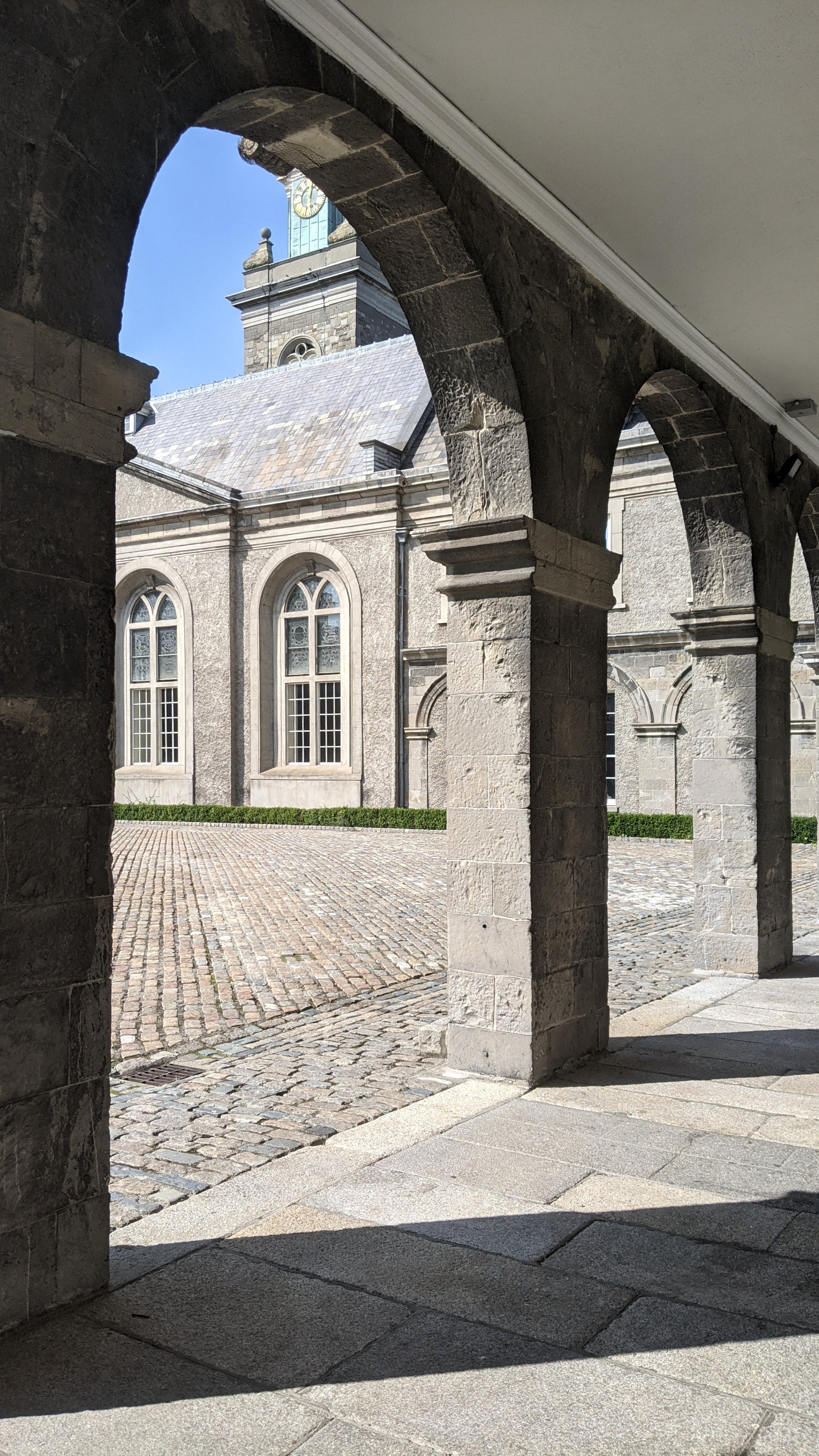Irish Museum of Modern Art - Dublin, Ireland
A few grand works by Caravaggio, a monumental book collection, a fantastical garden, and a Neo-classic modern art museum displaying works by artists from the African continent to Dublin’s homegrown agents welcomed me to the Irish capitol.
I decided on Dublin with a motive that perhaps differs from the tourist aims often cited when visiting the city. For one, I limited my visit to the city, foregoing the journey to the emerald cliffs. I do not indulge in tomes of Oscar Wilde or James Joyce, two of several literary marvels with heritage in Ireland. Hence my trip was not inclined by literature. Finally, and perhaps most peculiarly for the art jet set, I visited Dublin for a different cultural indulgence - art (although a trip to the Guinness factory brought the opportunity to engage in a different sort of cultural tradition).
I admit that the rolling days of the pandemic stirred a desire to travel to almost anywhere. Ireland was one of few countries open to American tourism. A different period in travel would have lured me elsewhere.
Still, I was not disappointed.
Exhibition view at IMMA.
A coffee truck among flowers in the IMMA courtyard.
The exhibition Ghosts from the Recent Past presented works from the Irish Modern Museum of Modern Art (IMMA) collection acquired from 1980 and onwards. The collection understandably included works by Irish artists. But it reached further, evidenced by its inclusion of works by Sir Isaac Julien (whose film, Paradise Omeros (2002), presented the sea as an allegory between England and Saint Lucia and explored postcolonial identity ) and a photograph series by Zanele Muholi. Both artists embrace LGBTQ identities. The exhibition examined how “artworks carry the language of resistances, waywardness, joys and subversions, which continue to resonate and agitate.” The curatorial statement showed no shortage of consideration of the universal effects of the pandemic and social equity outcries that define this period. In the chaos midst, or rather, a longer-term chaotic epoch, art produces joy that is also long-lasting. Said differently, if pain in the human condition is long-suffering can joy be also?
I wandered through the Neo-classical enclave - that is, the courtyards of IMMA - before my happy discovery of the museum’s garden. The current outdoors exhibition juxtaposed the orderly facade of the main museum with neon, geometry and… tongues?
Irish artist Niall Sweeney’s works, in the exhibition “Club Chroma,” were organisms. Although not tongues specifically, they were nonetheless fantastic, emancipated and otherworldly. IMMA’s handsome shrubs were topped with reflective orbs. Lollipop-swirled objects playfully peeked from the top of hedges. Sweeney, an artist and nightclub pioneer, described the forms of the site-specific exhibition as “energy transformations of light in plant biology, tuning in to the diverse forces of nature in a universal desire to dance freely again.” For some, freedom through dance is the height of freedom known. Fittingly, Sweeney’s forms were “born on the grassroots dancefloors of the marginalised.” I could certainly imagine tongues, hanging out of wide and face-spanning smiles, moving about.
Niall Sweeney’s chromatic shrubbery toppings.
Dancefloor creatures take over the garden fountain.
I spent my remaining days in Dublin exploring the National Museum of Dublin. The building was another expression of Neo-classic architecture although the art was more in line with the exterior: The museum contained largest works by Caravaggio I had ever seen. I was mesmerized in the artist’s signature mastery of creating light on the canvas, and my height relative to the canvas pulled me into the giant frame. I also visited the Trinity College Library, which contains more than 200,000 books. I was totally unprepared for the grandeur of the setting. Neither of those places carried the funkiness of a disco, but my heart still skipped several paces.








